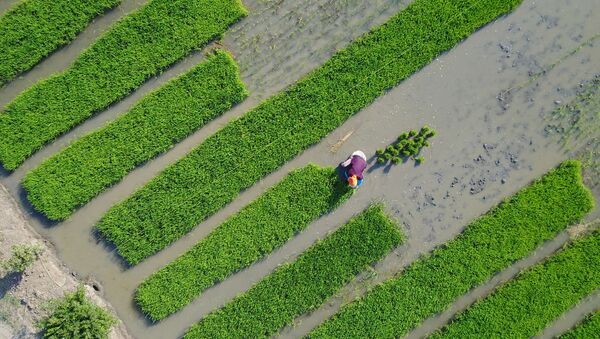The new saltwater-tolerant strain of rice is actually a tried and tested strain; now, however, scientists have been able to increase its yield nearly threefold, to 4.5 metric tons per hectare. Yuan Longping, China's top authority on hybrid rice, told Chinese media that cultivation of the new hybrid rice would be able to feed over 200 million people.
The new rice has already gone on sale, but remains a novelty item, its price remains nearly eight times higher than that of ordinary rice (50 yuan, or $7.55 US, per kg). Nevertheless, over a thousand people have pre-ordered the intriguing 'sea rice', and Yuan Ce Biological Technology, the Qindao-based startup partnering with Yuan's research team, expects sales revenue of 10 million yuan ($1.5 million) by the end of the year.
Scientists say the new rice has health benefits, too, since the strain's tough nature allows it to resist certain diseases, bugs and vermin, hence reducing the need for pesticide use.
Na Zhongyuan, director of the Yunnan Institute of Ecological Agriculture, said that it is not possible to officially name the variety of 'sea rice' just yet, although it has been branded "Yuan Mi," in honor of the project's chief scientist.
The scientist says more research will be required on the cultivation of rice in waters with a high salinity content, or in pure sea water. Other pressing issues that China must first deal with are the availability of inland water resources, and the pollution of those resources. Nevertheless, Na stressed that "the emergence of a new type of rice – this so-called 'sea rice', is great news."
According to the South China Morning Post, the research breakthrough is highly significant, since it effectively boosts China's potential rice production capability by nearly 20%. At the moment, the country has about one million square km of 'waste land', where rice plants have a difficult time growing due to high salinity and alkalinity levels in the soil.
Scientists say they are only at the start of the path; as more and more salt water rice is produced, economies of scale will kick in, and prices will fall.




